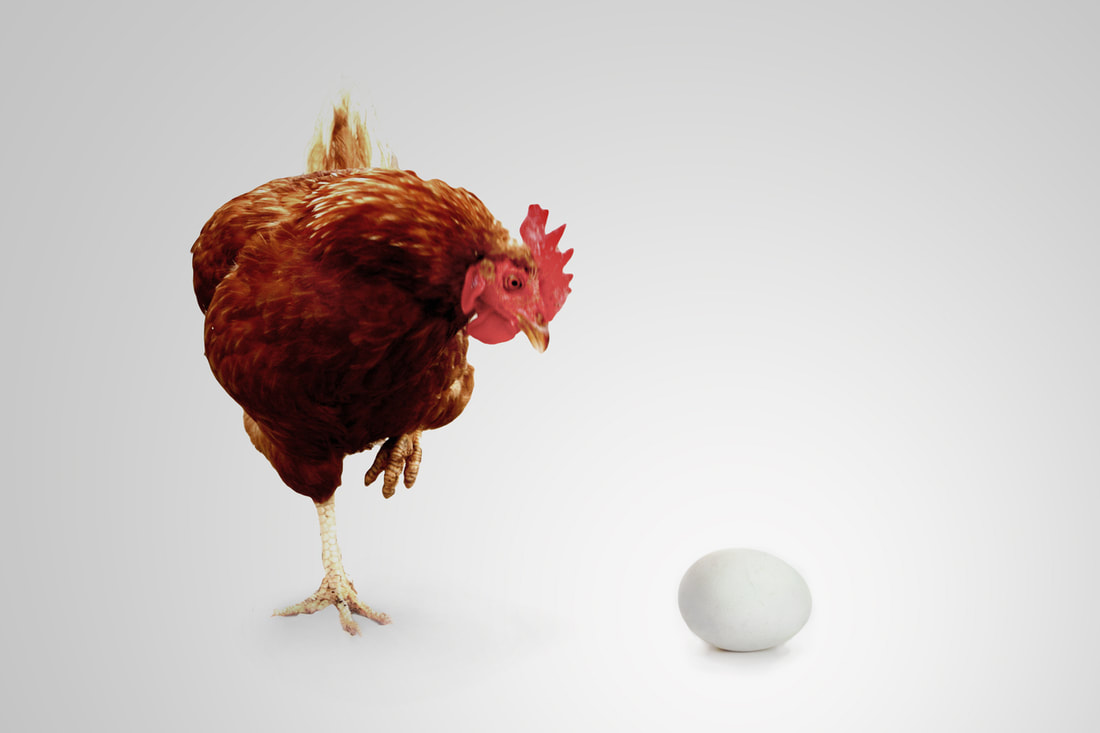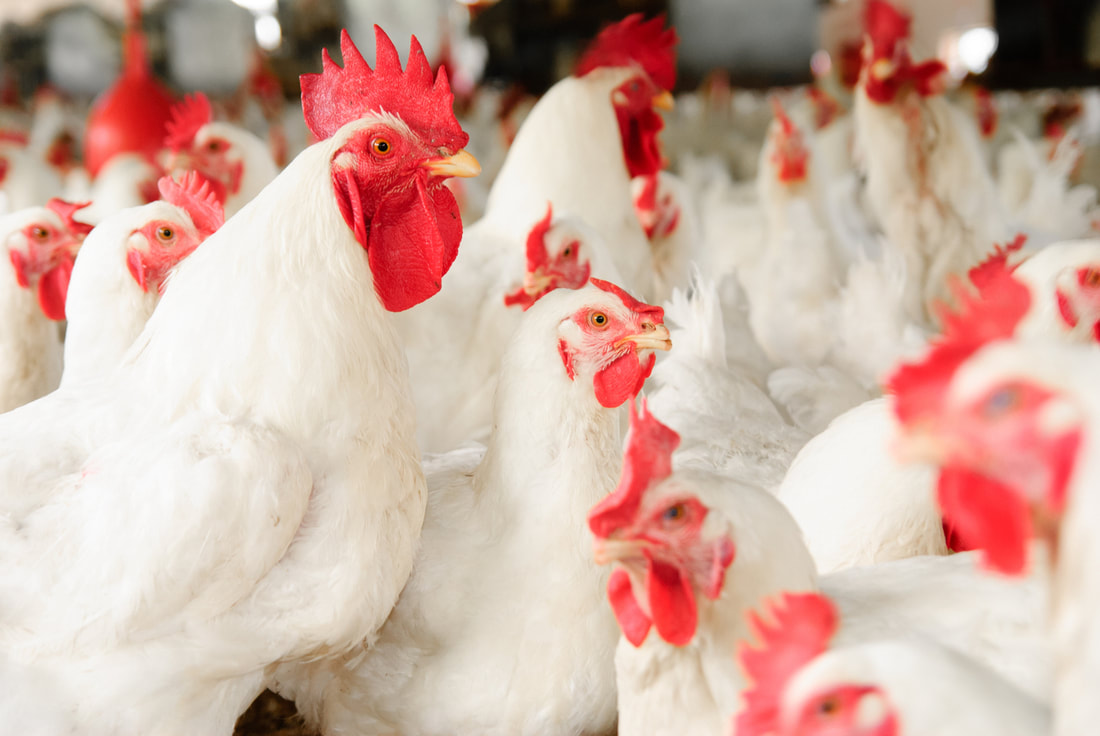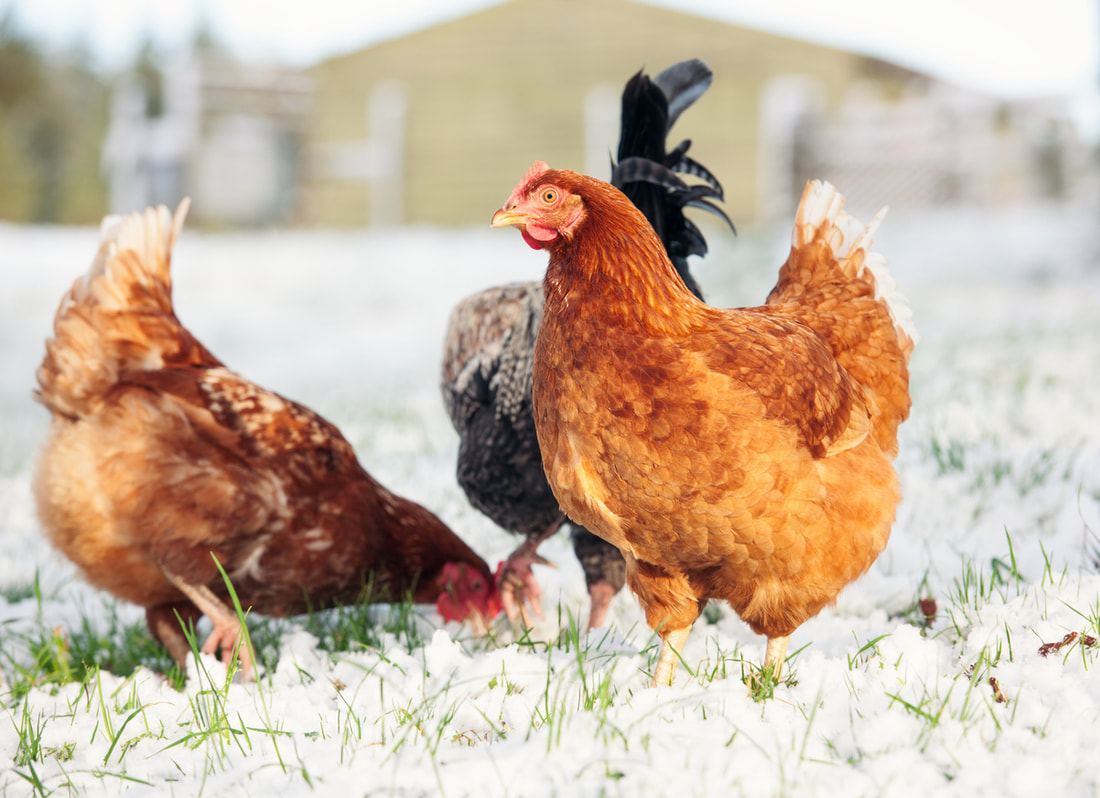|
It is that time of year again--Time to spread some holiday chicken cheer! Here at PopWorms! we want to help you gear up for the holidays with some great finds for you, or any one of your flock loving friends! Check out the fun and unique gift ideas we have for you!
PopWorms! Holiday Bundle The bundle is back! Get both of our flagship products at a great, bundled price! Treat your chickens right! Egg on a Bagel Maker For the breakfast sandwich lover! Why settle for a plain, circular egg, when you can make one with a hole in it to match the bagel! Chicken Family Garden Stake Set For the chicken loving family! Forget stickers on the back window of the mini van, these garden stakes are a must! Hand painted, floral deviled egg plate For that friend or family member who loves to host parties! This hand painted plate is beautiful, and functional! Baker's Helper Know someone who lives to bake things from scratch? This baker's helper will be their new best friend in the kitchen! A great place to keep eggs, butter, and liquids so they can come up to room temperature before use. Fried Egg Spoon Rest A handmade spoon rest that will look great in any kitchen; perfect for the breakfast lover on your list! Personalized Egg Collection Basket Collect eggs in personalized style with this rustic egg basket! The Chicknic Table Feed your flock in farmhouse style with this picnic table made just for them! Chicken Tender T-Shirt This hilarious T-shirt will look great on that chicken crazed person on your list! Fluent in Fowl Language T-Shirt Who doesn't love a good pun; this T-shirt will have everyone talking! Chicken Leg Socks Stay warm in style! Happy holidays from all of us to all of you!
0 Comments
No matter how much a backyard chicken enthusiast loves chickens, the most common reason to have a flock is for the fresh eggs. That being said, many egg layers slow down (or completely stop laying) during the winter cold months.
However, it doesn't have to be that way. Here are some tips to get eggs year-round from your chickens. Get the right type of chicken. There are many breeds of chickens and some lay better than others. Traditionally, there are meat birds, laying birds, and those who are dual-purpose (they are good egg layers and can be used for meat). The egg layers have been bred to lay eggs throughout the winter, more than meat and dual-purpose birds do. There are also breeds, such as Leghorns and Sex Links, which are bred to maximize egg production, even in the winter. Use artificial light. Most chickens require fourteen hours of daylight in order to lay eggs. Unfortunately, for most of the United States, we are looking at only nine or ten hours of daylight during the winter months. For that reason, many chicken farms add artificial light to make sure that their chickens have the required amount of daylight to continue to produce eggs during the winter. That being said, chickens need six to eight hours a night to rest and stay healthy so you can't just leave the light on all day and night long. Your best bet would be to get a timer to make sure that your chickens get enough light to keep laying, while still being able to get enough sleep at night. Maintain a healthy diet. It is important that you feed your laying hens properly to ensure good egg production. This is even more important in the winter when they can't forage for bugs and other things in their yard. Overall. The best way to keep your chickens laying in the winter is to buy chickens that are bred to be good egg-layers. These are more likely to keep laying, even as the weather gets colder. You also need to think about using artificial light. Hens need fourteen hours of light in order to lay eggs. However, you can overdo this because they also need a good night's sleep to stay healthy and productive! And as always, treat your egg layers with PopWorms! to help keep them healthy and happy! Chicken eggs can sometimes seem like an enigma, but chickens go through a regular cycle and different diets and habitats can contribute to a healthier hen and eggs. Typically, we are exposed to eggs when they are broken for breakfast. Let's examine the parts of an egg and gain insight into the egg-laying process!
1. What is Egg Yolk? A hen's reproductive system is centric in the ovaries. Hens are born with two ovaries, but typically only one will remain able to produce eggs on regular basis. That egg yolk that you see in your typical egg is what is released internally from the hen's ovary and travels out of the ovary into what is called the "Oviduct". The oviduct is essentially a canal and if you have a rooster, your egg can be fertilized in this stage. 2. The White Spot on an Egg Yolk The viscous white spot on an egg yolk is actually what initiates the cells to multiply and create an embryo if your egg is fertilized. 3. Is a Rooster Necessary? No, a rooster is not necessary for a hen to produce eggs. The rooster merely aids with the fertilization of the eggs, to start the next generation of chicks! 4. What happens when the egg travels through the Oviduct? The yolk will travel through sections of the oviduct called magnum and isthmus. The magnum section is the longest section of the oviduct and is responsible for creating the clear egg white surrounding the yolk. It acts as a membrane to protect the yolk and provide an enclosed sac, to provide nutrition to a potential chick in formation. 5. How the Eggshell is formed The egg shell is produced in the uterus of a hen via a gland called the "Shell Gland" where the egg takes up salts and fluid into the protein "egg white" section of the egg called "Albumin". The ovum, or egg, stays in the shell gland from 18-26 hours depending on the hen's cycle. 6. The Vent The vent refers to the "cloaca", which is an opening present in avian species. The cloaca is where the egg is released into a nest box. After about 30 minutes, this process will repeat. Healthy Hen, Healthy Eggs! Keeping your hens healthy helps produce high-quality eggs. Here are some signs to look for when determining and enhancing the health of your hens:
And as always, remember to treat your chickens with PopWorms! to keep them healthy and happy! Whether you've had chickens for years, are an experienced at-home egg seller, or are new to the egg selling game, the following tips are an EGGcellent way to put your business at the top.
1. Colors Mix things up by getting chickens that lay different colored eggs. Then, you can mix and match your cartons by filling them with a beautiful variety of brown, tan, blue, green, etc. 2. Advertising When it comes to advertising, you can't go wrong setting up a couple of social media accounts to keep your customers up-to-date on deals, special discounts, and more. These are some of the more common media platforms and the different audiences you are likely to reach.
3. Designing Marketing Materials Don't take some sharpie marker to the side of a cardboard box. Instead, update your design game by using the free app Canva.com. It is easy to use and allows you to create posters, flyers, business cards, and so much more. Start with the free templates, let your creative side take over, and make your marketing materials shine. 4. Storage Ensure you aren't giving your customers rotten eggs by being mindful of your egg storage. For example, if your eggs are sitting on the counter or at room temperature, they should not be washed to avoid removing the bloom. However, if they are going to be stored in the fridge, they can be washed. 5. Delivery Now it's time for delivery! 6. Shelf Life Here is how long your eggs will last so you know when it is time to junk or deliver.
7. Types of Trays You can ask your customers to save egg cartons and set up regular drop-off and pick-up times so that everyone is reducing waste. You could also special order clear or colored cartons for special occasions like Easter or the local Farmers' Market. 8. Customer Preferences Keep customer preferences in mind for better customer service. You can send questionnaires or customer satisfaction surveys with each batch of eggs to be collected at your next delivery. Take note of what they like and don't like, and make adjustments as you go forward. Follow these tips, and the neighborhood will be clucking about your egg business! And don't forget to feed your chickens PopWorms! to keep them Eggcellent shape! What does it take to raise chickens? Broiler chickens, to be exact. They can make good pets and require little in terms of maintenance. Simply put, all you need is adequate housing, food, and water to raise broiler chickens successfully.
Why Raise Broiler Chickens? Raising broiler chickens is manageable. You'll enjoy the experience of watching them grow. They are easy to feed and don't need any specialized equipment for this purpose. Also, a large labor force isn't required to help raise the chickens on your farm. More so, you can vaccinate them to keep disease at bay. What Should You Feed Broiler Chickens? It would be best to feed your broiler chickens a high protein diet to support their rapid growth. In their first 4 weeks, ensure you feed chicks a starter feed with 23% protein, and at 4 weeks and older, provide them with grower feed with 19% protein. Tips For Feeding Broiler Chickens To ensure healthy broiler chickens, here are some tips for feeding:
Store-Bought Vs. Home-Grown Broiler Chickens Did you know that store-bought broilers grow faster than home-grown broilers? They take approximately half the time to develop. Store-bought chicken requires less resources to maintain, unlike their home-grown counterparts. Home-grown broilers are more expensive to maintain as you need land and water to grow their feed—for example, corn and soybeans. Store-bought broilers don't contract disease easily. However, home-grown broilers are more susceptible to disease. Store-bought chickens are not as active as their home-grown counterparts. They spend a majority of their time – 76%-sitting. Also, store-bought chickens have larger appetites compared to home-grown chickens as they feed over 50 times in only 24 hrs. What Are Some Home-Grown Breeds Of Broilers? It's vital to consider the type of breed you'll raise as a backyard chicken farmer. These breeds include kosher king broilers, turken broilers, big red broilers, and ginger broilers. How To House Your Broiler Chicken In the first few weeks, it's vital to maintain a 90-95 degrees F temperature, which you place at one end of the coop (cage). Baby chicks are incapable of regulating their body temperature. However, once they are over 4 weeks old, they maintain a 60-75 degrees F temperature. You can use a 9-watt compact fluorescent bulb. What about their bedding? Examples of non-slippery bedding to use for your pet broilers include wood shavings, rice hulls, and ground-up corncobs. Slippery materials like cardboard and plastic can cause leg deformities in your chicken. Non-slippery material can absorb moisture but ensure you change it when wet to prevent diseases like internal parasites. Bedding also helps keep the chicks warm and can be 3 to 4 inches deep. Lastly, always ensure the coop is clean – you can take it a step further by using a disinfectant. Broiler Chicken Farming At Its Best Raising your broiler chickens doesn't have to be a complicated affair. Give them enough food, water and always keep their housing area clean for healthy broiler chickens. Also, be sure to treat them with PopWorms! ECO and PopWorms! PRO! The winter season can be a very difficult season for chicken owners. You may be asking yourself whether your precious chicken will survive the winter cold. Don't worry any longer; the following tips are helpful for you and your chickens' survival.
1. To Warm Your Chicken, Use the Deep Litter Method. The deep litter technique allows the chickens' bedding material and poop to accumulate in the coop over other hot seasons. This method ensures that you have a foot of composting manure on the surface of the chicken coop, giving off heat and warming the coop naturally. 2. Feed Your Chicken With Corn and Fresh Water Every Evening To Keep Them Warm at Night. Corn is chicken's favorite meal. Keep the bellies of your chicken with bowls of cracked corn every evening. By doing so, you keep them busy overnight with something to digest, keeping them warmer. 3. Roosts Are Essential In The Winter Season. Roosts allow your chickens to fluff themselves; it keeps them warm. Make sure that you raise the roosts at least 2 to 3 feet above the earth's surface to keep your chicken off the icy and cold ground. 4. Select The Right Breeds For Winter. The most favorable decision you can take to ensure your chickens are safe through the winter is to get the right cold hardy chicken breeds. Such breeds are adapted to cold seasons; they have very reduced wattles and combs, making them non-susceptible to frostbite. Some of these breeds include:
5. Insulate The Coop. Another great way to protect your chicken from winter is by winterizing the coop. This is easily done by insulating the coop. If it's possible, you can use fiberglass insulation around the walls of the chicken coop, then cover them up with plywood. I hope that the above tips have cleared your worries and answered your troubling questions on how to keep your chickens warm during the winter. And don’t forget to feed your chickens PopWorms! to treat them in the winter months! Here's the Scoop on Giving Your Chickens a Bath
Welcome to the wonderful world of backyard chickens! Having a reliable source of eggs and becoming more independent is now within your reach, plus you get the added bonus of watching your new chickens develop their personalities. Now that you have your chickens you'll want to keep them clean and happy. So here's the skinny on the exact reasons why and how to wash a chicken properly. How chickens normally keep clean and when to intervene Chickens are very independent, just like you're aiming to be. For the most part, they keep themselves clean with regular dust bathing. So when do you need to intervene in their normal routine and give them a good old fashion rinse off? They won't be able to remove caked-on feces themselves, so giving them a hand is the best way to keep them spick and span. You may also come across some less common problems such as: treating pests, cleaning to assess injuries, or the dreaded skunk spray. The steps to get a clean chicken Bathing a chicken is much like bathing any other animal, the supplies and process are very similar. Whether you are bathing them in a bathtub, sink, or a bucket, you are going to need to keep yourself safe. Make sure to hold your bird very securely with one hand on their wings at all times. Lower them in gently, this is a new experience for them after all. Begin using lukewarm water and soak your chicken's problem areas applying a small amount of shampoo, lather up, and watch the suds work their magic! If your chicken has a foot infection or caked-on debris a nail brush will be super helpful to have on hand. After you remove any dirt or feces be sure to rinse well and gently squeeze any excess water from their feathers. On hotter days you can now release your bird to air dry, you don't want a wet chicken so if it is a little chillier wrap them in a towel and use a hairdryer on the low heat setting. Even better if it has a cool setting. Lastly, make sure to never leave your little chicken unattended in water, chickens can drown very easily. Q&A At what age should I bathe my chickens? When they are younger than 6 months a full bath is not necessary and if they have any caked-on feces or dirt, wiping them down with a wet towel will do the trick. What type of shampoo should I use? Baby shampoos or any other gentle use shampoo with no irritants, such as Johnsons baby shampoo, or dawn dish soap. And don't forget to treat your clean chickens with PopWorms! Treats! You realize you know little about raising chickens as soon as your first flock arrives. It can be an uphill task, especially when you don't know where to start. Luckily, you're not the only person who goes through this stage. Many people find themselves in this predicament because they pick up chicken raising as a hobby.
Although the internet seems to have all the answers, books provide a massive wealth of knowledge and experience. You have to follow standard procedures to raise a healthy flock and high-quality eggs. The following books will help you raise both healthy chickens and other small birds. 1. Melissa Caughey — How To Speak ChickenAfter spending a lot of time watching and studying chicken behavior, Melissa Caughey wrote a masterpiece to get you started. How To Speak Chicken is a super fun book that helps you interpret your chicken's gestures and sounds. You get to learn everything from the call of a mother about to lay eggs to the cute baby sounds. It is an excellent book choice if you are thinking of raising chicken with the entire family. 2. Kathy Shea Mormino — The Chicken Chick's Guide to Backyard ChickensAre you thinking of raising chicken for commercial purposes or as a hobby? Poultry farming is very different from backyard farming. While one focuses on meat and egg production, the other is about raising healthier chicken in a happy and safe environment. Kathy Shea Mormino provides the insight you need to raise healthy and happy chickens in your backyard. 3. Gail Damerow — The Chicken Health HandbookRaising chickens comes with one enormous downside — diseases and ailments. The Chicken Health Handbook gives you all the information about potential diseases that might affect your chicken. Chapters include chicken anatomy, health and nutrition, diagnostic guides, parasites, treatment, and so much. Avoid costly veterinary visits by following the tips and tricks presented by Gail Damerow. 4. Lisa Steele — Fresh Eggs DailyAmericans are getting cautious about what they eat. If you need a guide on getting high-quality eggs in your backyard, consider reading this book. Lisa Steele's Fresh Eggs Daily helps the reader choose the right breed and care for them correctly. It contains all the information you need to get healthier meat and eggs right from your backyard. 5. Harvey Ussery — The Small-Scale Poultry FlockHarvey Ussery presents an all-natural approach to raising chickens in this must-have book. Interestingly, The Small-Scale Poultry Flock covers both chickens and other fowl. It emphasizes the need for quality over quantity, whether raising chickens for personal or commercial purposes. Don't Just Read, Treat Your ChickensRaising chicken is simple once you understand a few procedures and techniques. However, every chicken-raising book will emphasize the need for a healthy diet for your flock. At PopWorms!, we provide healthy and high-nutrient treats for your backyard chicken. Ensure you contact us today to give your feathered friends something they will love. Unique birds of a feather flock together, and Polish Chickens are no exception. These gorgeous crested birds are known for their downy flair—some even come fully bearded—but there's more than meets the eye when it comes to the Polish Chicken. Here are a few important things to know about this heritage breed.
They're Not Actually Polish According to the Livestock Conservancy website, Polish Chickens don't originate from Poland, but were given their name because of how their crests resemble the feathered hats donned by soldiers in Poland. One theory is that this breed originated in Spain and was subsequently brought to Holland. It was there that the breed gained its unique coloring and signature crest. Another theory, according to the Rural Living Today website, is that the birds were brought from Asia to Europe during the Middle Ages. They're Mild Tempered The Livestock Conservancy page notes that birds in this breed tend to be non-sitters and non-broody, and are known to be mild-tempered and even cuddly when well-bonded. They're also lower in the pecking order and can be vulnerable to bullying by more aggressive breeds. This makes them ideal as show birds and as pets. Be mindful, though: according to the folks at the EcoPeanut website, because their crests tend to partially or even fully cover their eyes, they're more likely to be spooked. This also means they're more vulnerable to airborne predators when let out to free-range, so take extra care if you choose to let them wander. They Require Extra Maintenance Keeping the plumage on this bird clean and dry is essential, in order to prevent dust, dirt, or debris from getting into their eyes. According to EcoPeanut, these birds do well in confinement, which will help keep them away from excess dirt and the elements. However, if their crests do get dirty, it is important that they're cleaned and dried as quickly as possible. These fowl are also at risk of infestation of mites and lice, and should be checked and treated regularly to prevent irreversible damage to their eyes. They Can Be Persistent Layers Long before they laid claim to the showroom floor, these birds were used primarily for their egg production. However, as they're been bred more for ornamental purposes over the years, their laying levels have decreased as well. Polish Chicken eggs tend to be medium-sized and white, and the most persistent can lay up to 200 eggs a year (EcoPeanut). The Livestock Conservancy notes that these birds tend to lay a bit later in the season, but once they being, they are excellent producers. Making sure they're well-cared for, well-fed, and have enough protein is an essential part of keeping your Polish Chickens happy. PopWorms! has an excellent variety of black soldier fly larvae supplements to add to your laying feed to make sure all your chickens are happy, healthy, and full of love. Visit our online store, or find us at your local supplier to get goodies for your backyard friends today. Happy Memorial Day! It won't be long before millions of families across the nation will gather together around their tables with bowls full of dye, some fancy stickers, and a whole bunch of chicken eggs. Along with Easter comes Easter eggs. They are such a staple of American life that people rarely stop and think about why, exactly, they do it. How do colorful eggs and chicks relate to Easter? Why do we do it, and where did it start?
The practice of coloring eggshells for special events is an ancient one. The oldest known examples date back to 60,000 years ago when prehistoric humans painted ostrich eggs. After the rise of civilization, ancient Mesopotamians and Egyptians would paint eggs to symbolize new life and a celebration of spring. This practice spread through other cultures, eventually influencing early Christians who soon adopted the practice in their worship of Jesus Christ. For early Christians, the egg was a clear symbol for Jesus. The eggs were most often painted red to symbolize the blood of Jesus, and baby chicks acting as a symbol for the rebirth of Jesus. During the middle ages, the practice of using eggs during Easter only continued to grow. It was a common practice of the time that people weren't allowed to eat eggs during Lent. After going weeks without them, the people were naturally excited and decorated and celebrated their ability to enjoy the food staple once again. The Easter Egg tradition would later be brought to America by Germans who settled in Pennsylvania. The eggs were still a symbol of the life of Jesus, and the practice slowly spread throughout the entire nation. Today, it's estimated that over 180 million chicken eggs are bought each Easter as people continue the decorating tradition. The practice of dying eggs remains alive and strong, and there's no doubt that there will be plenty of dining tables with new stains on them very soon--and lots of egg salad sandwiches in the near future! Happy Easter, everyone! |
PopWorms!®
|
|
Site Map
|
Products
Dry Products
PopWorms!® ECO Popworms!® ECO Bulk PopWorms!® PRO Live Products PopWorms!® LIVE PopWorms!® Leftovers |
Shipping
Site-wide
Free Shipping Over $25 |










 RSS Feed
RSS Feed


